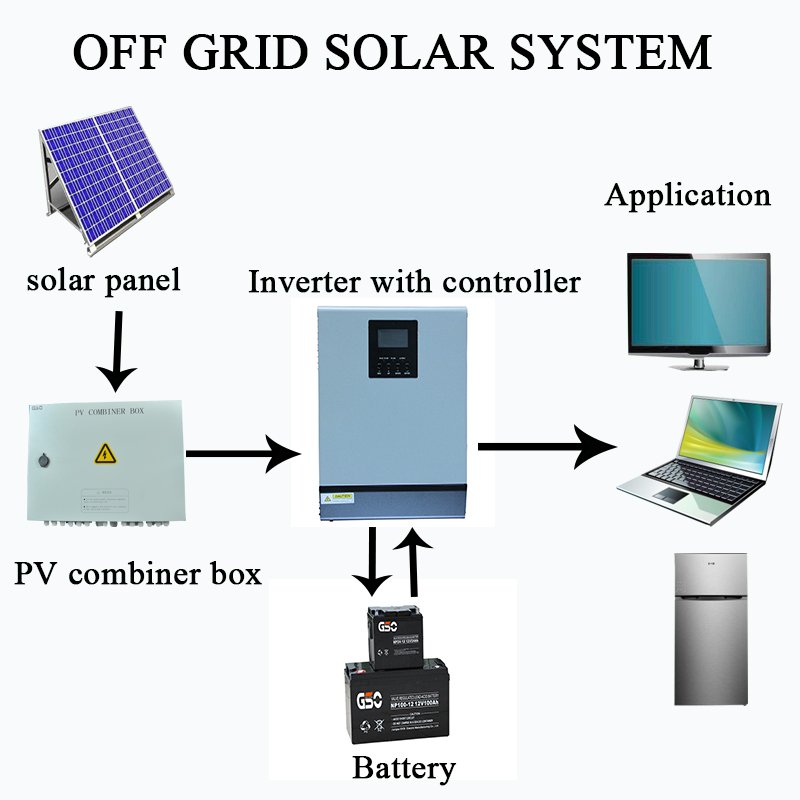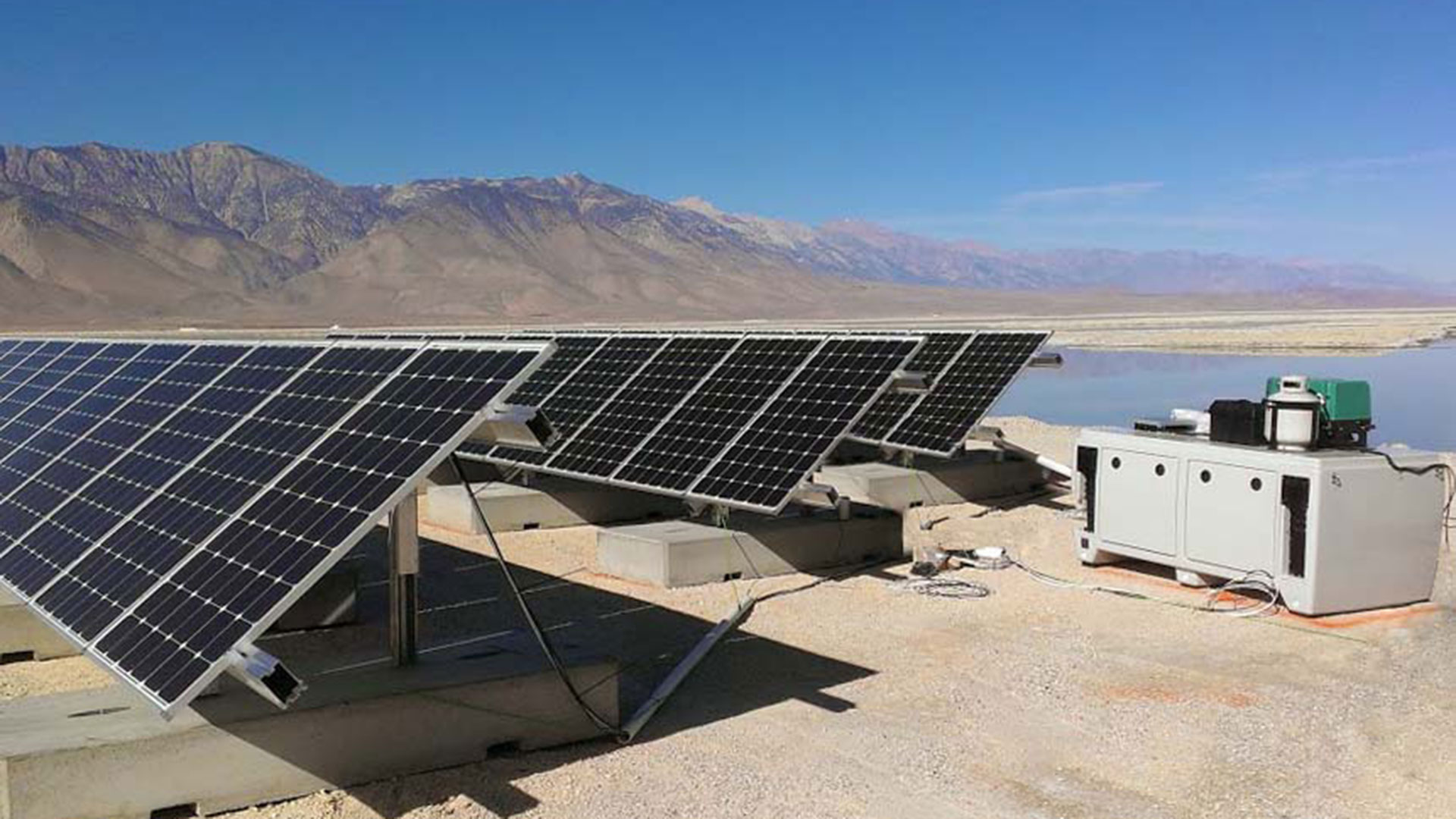Off-grid solar system kit
- Home
- Solutions
- Solar Solutions
- Off-grid solar system kit

Off-grid solar systems can be used to power supply medium to large properties. The system provides all the energy needed without being tied to a utility grid.
The solar panels produce energy that is then stored in a battery bank (backup batteries) to be used later in supplying the building with electricity. The batteries are set to charge whenever the sun is shining, so the energy can be used at night or when the weather is cloudy.
This system is the perfect option for where net metering is not allowed, which allows exporting excess solar energy to the grid or importing energy in case there is not enough solar energy generated.
Off-grid solar system components
Solar Panels
Silicon-based photovoltaic cells (PV cells) are used to make current solar panels that are connected to adjacent panels through cables, they are used to produce direct current (DC) electricity from sunlight/ irradiance, not heat.
The energy produced depends on solar panels orientation and tilt angle, efficiency, energy loss due to shading, dirt and ambient temperature.
DC-AC solar inverter
It’s a power electronics device used to convert solar-generated electricity (Direct Current - DC) to Alternating Current (AC) needed in most properties, with an efficiency that can go up to 98%.
Solar cables
Charge Controller
Which calculates the current amount to be injected into the batteries to achieve maximum performance, also protecting the battery from overcharging. This can be helpful in determining the efficiency of the overall system and the operating life of the batteries.
Battery Bank (backup batteries)
The batteries are used to store excess energy generated during the day, to be used later when there is not enough solar power or at night.
A Connected Load
This ensures that the electricity is flowing through a complete electrical circuit.
Backup generator and a transfer switch
This component is optional in an Off-grid system, used when the solar power and the battery bank doesn’t provide enough power for the property. This increases reliability and redundancy.
The backup generator comes with a manual or automatic transfer switch, to switch between the generator and the energy from the solar energy.
System Mounts

How the Off-grid solar system works
Direct current electricity is generated when the sun rays hit the solar panels.
The DC electricity is then transferred to the charge controller to decide the amount of electricity that goes into batteries.
The solar inverter converts DC electricity to AC electricity to be used in the property.
What to know before installing the system
- Shade analysis: shading from neighboring trees and buildings, cloudy weather or from nearby solar panels can prevent surays from hitting the solar panels, which can decrease the system efficiency significantly.
- Sun hours: to determine the amount of radiance needed to produce the required output wattage.
-
Tilt angle: the angle that the panels need to be installed by, to get the most of the sun rays.
Adjustable panel frames can help increase efficacy, through changing the tilt angle in respect to winters and summers sun hours.

Off-grid solar system benefits
- Avoid power outage: the system is reliable because of the batteries that store energy and use it to generate electricity when needed
- Reduce electricity cost: solar systems can save money in the long run, as it stops the reliance on utility companies and uses a clean free energy source to provide power needed instead.
- Easy installation: through being not tied to a grid, it’s easier to install Off-grid solar systems and put them to work in no time.
- A great power source for rural areas: where there is no near utility grid that can be used, an Off-grid solar system is a good alternative, as it has its own batteries to store extra energy to be used when solar power is not enough.
Alternatives in the market
- On-grid solar system
- Hybrid solar system
